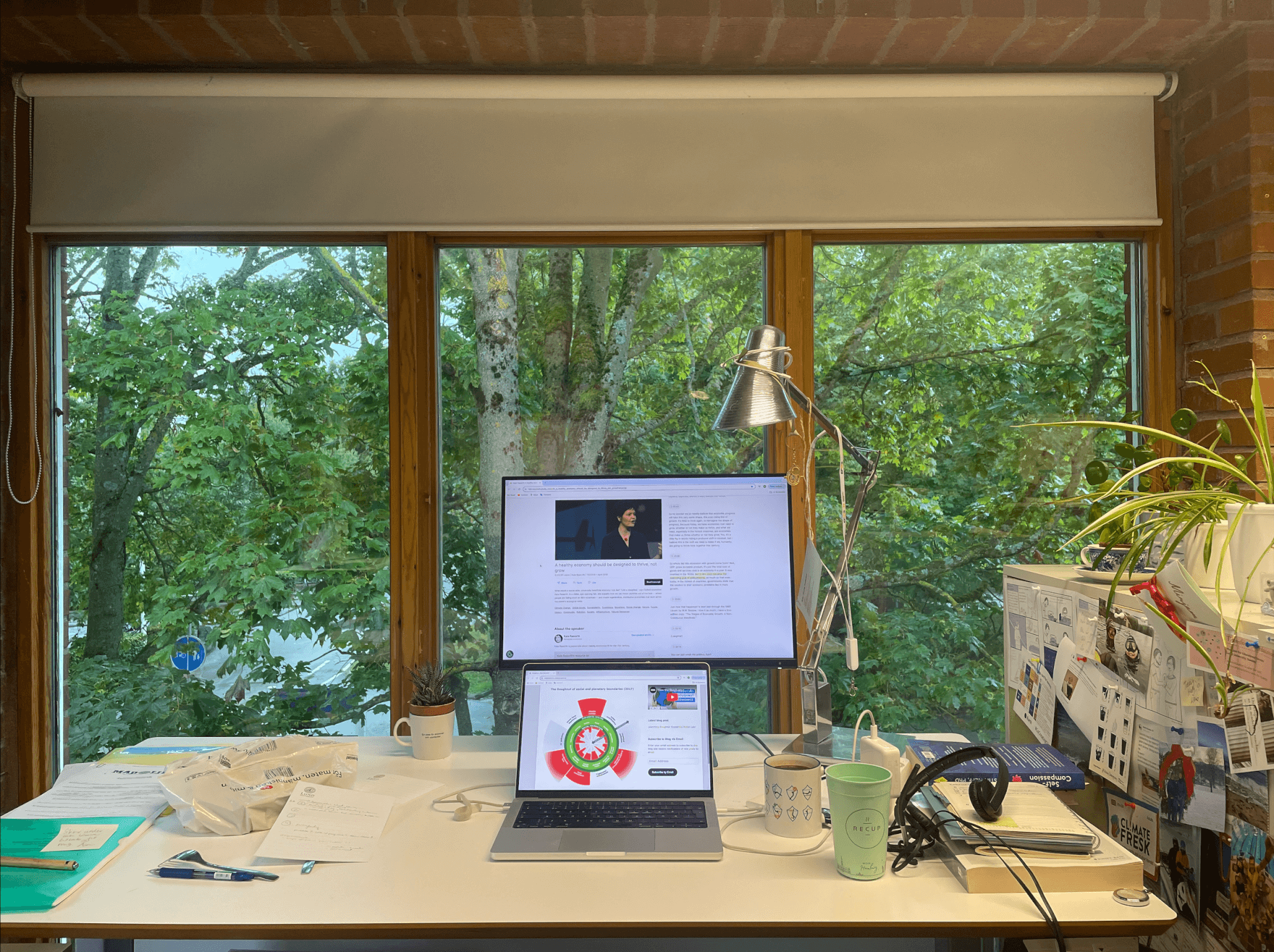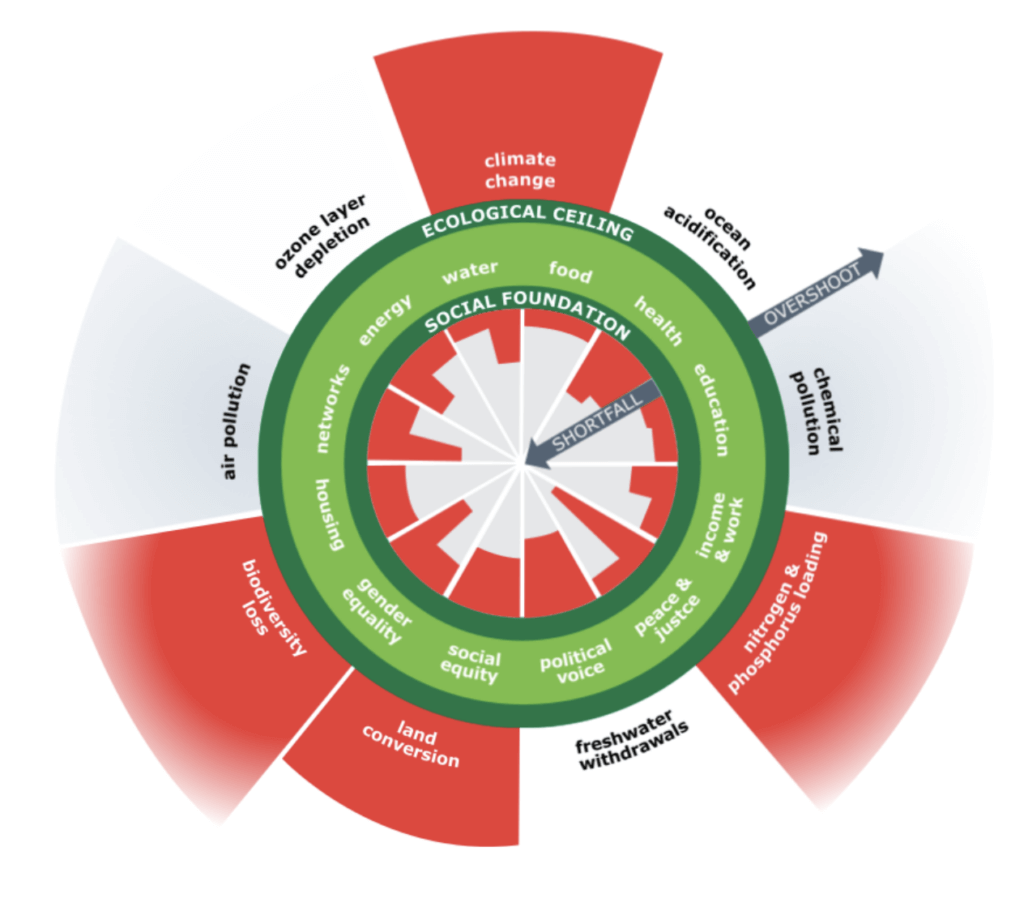
Using Kate Raworth’s “doughnut of social and planetary boundaries” to kickstart sustainability conversations?
I am really late to the party of “doughnut economics”, but I just discovered this great conversation starter on sustainability!
For the best introduction, watch Kate Raworth’s 2018 TED talk (and I think the focus does not even need to be on economy, but you can just ignore the term and it still makes perfect sense!). I am showing the doughnut graphic below just to give you an idea of what I am talking about, but check out Kate Raworth’s website to see an interactive version and explore it in more detail!

The “Doughnut of social and planetary boundaries”, see original here: https://www.kateraworth.com/doughnut/
The doughnut presents an “ecological ceiling” and a “social foundation”, and where we are currently situated relative to both. The ecological ceiling is formed by the nine planetary boundaries; for example the maximum atmospheric CO2 concentration that would keep climate change in check (we are far beyond that), an acceptable rate of biodiversity loss (also far beyond that), ozone layer depletion (which is not near a critical limit after all the interventions some time ago), but also chemical and air pollution (where we do not know what acceptable limits would be). The social foundation consists of 12 social standards that were internationally agreed upon, for example access to food and water, education, as well as gender equality and social equity. Here, we fall short on all measures.
On Kate Raworth’s website the doughnut is presented in an interactive version (mouse-over shows you how the boundaries are defined and where we are relative to them), and this is a great place to start exploring! I think this could be a great tool to start conversations both about planetary boundaries, both the way they are defined here but also more generally — there is only a limited amount of everything available on planet Earth, also for example the materials used to make computer chips or batteries for electrical cars. So while “fixing” climate change is urgent, it is not the only problem we need to consider if we are looking at planetary boundaries. And at the same time, there are all the social standards that are not met for many many many people, so we need to keep that in mind and work to improve living conditions while also reducing resource use and impact on the planet. And of course then there can be discussions about whether we value housing or access to healthcare for everybody as much as gender equality or social equity, or whether we consider climate change and biodiversity loss as equally threatening, and what values, assumptions, data we base our position on. Or whether maybe other aspects should be considered that are not currently represented in the doughnut, especially when we are using this tool in the context of a course and want to have a disciplinary focus while keeping in mind the bigger picture.
The doughnut has been developed further into tools that cites (or universities? or faculties?) can use to assess how a place is situated relative to social foundations and planetary boundaries, both locally and with respect to the whole planet, and what actions can and maybe should be taken to bring the place “into the doughnut”. Here is an example for what that looked like for the case of Amsterdam. Wouldn’t it be fun to do such a workshop for LTH or maybe even LU?